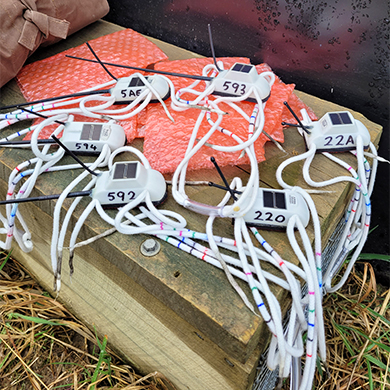Takahē research and monitoring
Introduction
We’re leaders at using the latest technology and techniques in our conservation work to get the best results for takahē.
Takahē conservation involves collaborative research, with experts in fields such as genetics, predator control, and bird health.
Monitoring
Takahē face many challenges in the wild. We gather important information by remotely monitoring them in the wild. We use the data to reduce the guesswork and make decisions for their conservation.

Takahē transmitters
Image: DOC
Smart transmitters
Many of the adult birds wear small smart transmitters. These transmitters send out radio signals that show the bird's location. This information allows us to track them and gives us a picture of what the wild population is doing.
The transmitter tells us the state of the takahē, letting us know if it’s alive, dead, or has dropped its transmitter.
Sky Ranger
The smart transmitters allow the birds to be monitored by an aircraft fitted with a GPS receiver, known as a Sky Ranger.
The plane flies a grid pattern over the mountains, which logs the location and state of each bird.
Once back on the ground, we use the data and insights in an ongoing study of adult takahē survival and movement in the Murchison Mountains.
New technologies
We’re working with other DOC species programmes and international suppliers to develop and test new transmitters to get better data faster. Cost, weight, and battery life are all considerations.
With an aim to reduce costs and carbon emissions, as well as to learn more about wild takahē, we ideally want our transmitters to provide live data on takahē location and activity. This may be possible by using either satellite or GSM (mobile phone-type) networks.
Learn more about how we manage the takahē population.
